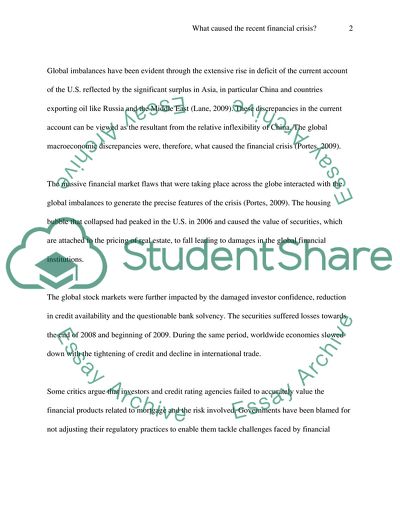Cite this document
(The Causes of the Recent Financial Crisis in Britain Research Paper, n.d.)
The Causes of the Recent Financial Crisis in Britain Research Paper. Retrieved from https://studentshare.org/finance-accounting/1732246-what-caused-the-recent-financial-crisis-what-should-the-british-government-do-to-stabilise-and-regulate-financial-markets-and-in-so-doing-reduce-the-size-of-the-government-debt
The Causes of the Recent Financial Crisis in Britain Research Paper. Retrieved from https://studentshare.org/finance-accounting/1732246-what-caused-the-recent-financial-crisis-what-should-the-british-government-do-to-stabilise-and-regulate-financial-markets-and-in-so-doing-reduce-the-size-of-the-government-debt
(The Causes of the Recent Financial Crisis in Britain Research Paper)
The Causes of the Recent Financial Crisis in Britain Research Paper. https://studentshare.org/finance-accounting/1732246-what-caused-the-recent-financial-crisis-what-should-the-british-government-do-to-stabilise-and-regulate-financial-markets-and-in-so-doing-reduce-the-size-of-the-government-debt.
The Causes of the Recent Financial Crisis in Britain Research Paper. https://studentshare.org/finance-accounting/1732246-what-caused-the-recent-financial-crisis-what-should-the-british-government-do-to-stabilise-and-regulate-financial-markets-and-in-so-doing-reduce-the-size-of-the-government-debt.
“The Causes of the Recent Financial Crisis in Britain Research Paper”, n.d. https://studentshare.org/finance-accounting/1732246-what-caused-the-recent-financial-crisis-what-should-the-british-government-do-to-stabilise-and-regulate-financial-markets-and-in-so-doing-reduce-the-size-of-the-government-debt.


